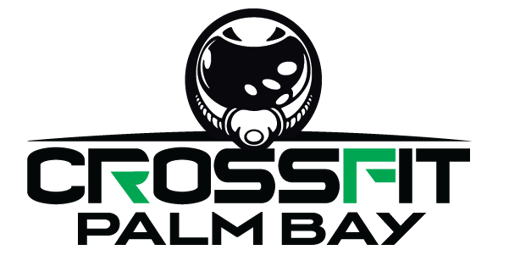Today, we're diving into the fascinating world of weightlifting training, specifically examining the contrast between percentage-based training and the Rate of Perceived Exertion (RPE). Understanding these methodologies can dramatically transform both the effectiveness and the enjoyment you derive from your training regimen.
The Unpredictability of Perfect Days
Let's paint an idyllic scenario: You're in peak condition—well-rested, nutritionally balanced, and the weather is just right. In such a 'perfect day,' lifting 100lbs, which is your one-rep max (1RM), seems entirely feasible. However, such days are rarities. More often, you find yourself grappling with sleep deprivation, fluctuating diet, or just having a bad day. These variables can significantly alter your physical and mental states, reminiscent of how Marty McFly's decisions in "Back to the Future" affected the future.
Encountering a genuinely perfect day, especially one that permits a true 100% max lift, is as likely as spotting Bigfoot riding a unicorn while munching on pizza-flavored Skittles. Daily stressors, inconsistent diets, and a rough start to the day are the norms we all face. This reality underscores the limitations of percentage-based training, which tends to overemphasize past achievements and doesn't accommodate life's inevitable changes, such as aging, job stress, or health fluctuations.
The Dart Player Analogy
To illustrate this point, imagine a professional darts player who can consistently hit bullseyes 100% accuracy in a controlled environment. Now, place them in a less-than-ideal setting—let’s say a CrossFit class, for example—right before a match. It's likely that their performance would drop to 60-70% accuracy. This scenario effectively demonstrates how external stresses can impact our bodies, affecting both our physical and mental capabilities.
The Power of RPE
Here, the concept of RPE, or Rate of Perceived Exertion, becomes crucial. It's a more adaptable metric, reflecting how you feel at a particular moment. For instance, on an perfect day, a 1RM (RPE10) Push press of 100lbs might feel surprisingly effortless. Conversely, on a day with challenges, that same weight might become unmanageable, with your 100% effort perhaps equating to lifting only 80lbs (RPE10).
The RPE scale, akin to the pain scale in a doctor's office, spans from 0 to 10, with 0 indicating no effort or no pain and 10 signifying maximal effort and OMG! I’m dying. This system allows for a dynamic approach to training, accommodating the inevitable fluctuations in your daily physical and mental states.
The Limitations of Percentage-Based Training
Reliance solely on percentages can breed frustration and a sense of inadequacy if you fail to meet set targets, potentially leading to injury or loss of motivation. Conversely, a prescribed weight system, while providing structure and goals, also carries the risk of injury because the weight is too heavy for some and might foster a sense of exclusion among participants.
The True Value of RPE
This is where the true value of RPE lies. It recognizes the natural up and downs in your energy, mood, and physical condition, thereby fostering a training approach that is both personalized and adaptable. RPE isn't about a laissez-faire training method; it's centered on fostering self-awareness and growth on days you are not 100% in the game.
More Than Just Weights
Intensity in training isn't just about increasing the weight. There is a time and place for heavier weight. Stick to your prescribed RPE and give it everything you got. The mantra "Go Hard or Go Home" encapsulates this approach, highlighting the importance of pushing your limits while also understanding when to take a break and listen to your body.
The Holistic Approach
This approach isn't limited to workouts; it encompasses maintaining an open mindset, proper nutrition, sufficient rest, and a positive attitude. And let's not forget the importance of shaking off the bad sh%t that happens. While some things are beyond our control, our attitude and approach to training are definitely within our grasp.
The Role of Coaches
Coaches are key players, doing way more than just teaching the moves. They're the cheerleaders and the tough-love givers, making sure everyone feels included and pumped up. They're there to boost your confidence, help you grow, and make you believe in yourself and your training. Whether it's a small win or a big one, they're celebrating right alongside you, keeping you fired up and ready for whatever comes next. They tailor workouts to fit everyone, whether you're a newbie or a pro, and even if you've got some physical limitations. They're all about pushing you to go a bit further, lending a hand when things get rough. Plus, they create this awesome team vibe, making everyone feel like they're part of something bigger. Above all, they're role models and mentors, shaping not just how you play the game, but who you are outside of it too.
Finding Your Fit
The choice between percentage-based training and RPE isn't just a matter of preference; it's about finding a method that resonates with your lifestyle and personal goals. By understanding and applying these concepts, you can make your training journey not only more effective but also more enjoyable and fulfilling. Remember, whether you're lifting weights or facing life's challenges, the key is to adapt, persevere, and always strive for your personal best.
Embracing a training methodology that aligns with your daily reality can be a game changer. It's about finding balance, understanding your body, and adjusting to the ever-changing landscape of life. Whether you choose percentage-based training, RPE, or a combination of both, the journey towards personal growth and improved fitness is a deeply personal and rewarding one. Let's lift not just weights, but also our spirits and potential!
Keep Lifting and Inspiring
-Coach Mike -




